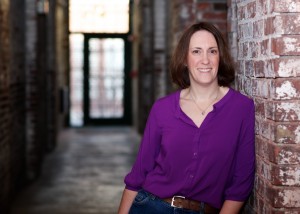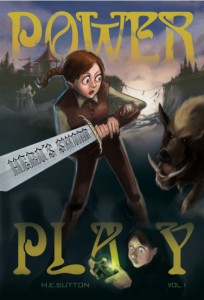 Today, I have the pleasure of hosting Mary Sutton, whose YA fantasy debut chapter book I edited for Delabarre Publishing. As a software technical writer, Mary has been making her living with words for over almost 20 years. Power Play is her first published fiction work. She is a member of Pennwriters and is the incoming secretary for her local chapter of Sisters in Crime. Find her online at marysuttonauthor.com. Here are her thoughts on world-building:
Today, I have the pleasure of hosting Mary Sutton, whose YA fantasy debut chapter book I edited for Delabarre Publishing. As a software technical writer, Mary has been making her living with words for over almost 20 years. Power Play is her first published fiction work. She is a member of Pennwriters and is the incoming secretary for her local chapter of Sisters in Crime. Find her online at marysuttonauthor.com. Here are her thoughts on world-building:
The Importance of World-building
by Mary Sutton
One of the most important things in fiction is that activity known as “world-building.” Most people associate this with fantasy fiction, but you have to do it no matter what kind of fiction you write. “World-building” is where you draw the world in which your characters live. This world can be completely fictional or set in the “real world.”
World-building is a tricky exercise. If you use the real world, as in your story is set in New York, you have to get the details right. This is anything from the names of any famous streets or buildings, to basic geography and history of the locale, to the “feel” of the world. For example, New York is a busy place. People talk fast, walk fast, and drive fast (well, when they aren’t stuck in traffic). It would not be believable if you wrote a story where the “city that never sleeps,” slept.
Fantasy worlds have their own challenges. A lot of people think fantasy and science fiction give the author free rein to make up whatever she wants. Well, that’s sort of true. Your world still has to make “sense,” it has to have a certain degree of believability. You may decide to create a science fiction world that is devoid of gravity, but you better spend some time thinking through things as simple as “how do objects stay in one place” or “how do people go to the bathroom” or your readers, who do have certain expectations of basic physics, aren’t going to find your story “believable make-believe.”
For Hero’s Sword, I had to create two worlds. First, I had to create the “real-life” world of middle school. Fortunately, a lot of things haven’t changed since I was in eighth grade, some thirty-odd years ago. There are still cliques; still the kids on the “outside,” and kids still have those seemingly impossible crushes. I was also fortunate in that I have a first-hand view into today’s middle school through my kids. So it wasn’t hard to build Jaycee’s school world. Between memories and observation I got a very good feel for what I was trying to do.
Slightly more challenging was making sure my characters felt like they belonged to this world. The vocabulary and speech of the characters that inhabited that middle-school world had to be right. It’s been a long time since I thought or spoke like a thirteen-year old, but again I was fortunate enough to be able to observe my kids and their friends.
For the fictional world of Hero’s Sword and Mallory, I had a bit more freedom. After all, this was the world of a video game, so I had lots of options. I could have gone all out with magic, dragons, elves, and wizards – all the trappings of high fantasy. But that’s not really where I wanted to go.
Instead, I wanted more of a medieval “real world” feel. Sure, there’s a certain amount of fantasy. After all, Jaycee is transported into a video game and that’s pretty fantastic.
But I didn’t want to get involved with inventing a new set of rules – or explaining them. It would be far easier to simply base the world of the game on some basic tenets of history, including feudalism, over lords (the “Empire”), petty wars between feudal lords (barons, or in my case, estate owners).
This freed me of the need to develop my own complex set of “standard operating procedures” for my world. Anybody who has ever played a game based on feudal principles would understand the rules of the road. But since my game world is fictional, I was able to build the relationships between Empire, estates, lords, and commoners pretty much how I wanted to – such as simultaneously allowing a woman to rule and having her people not completely approve of that because of a long history of male rulers.
Once I got into the groove, I really enjoyed my fictional world. Since so much of what I write is crime fiction that is very much based on fact (face it, there are certain things a police officer just cannot do), this was an extremely fun and liberating exercise.
I really enjoyed the world of Mallory and I hope I get to spend a lot more time there. And I hope you did to.
So tell me – what is the one thing you need in a fictional world to make it believable?
 POWER PLAY
POWER PLAY
by Mary Sutton
All Jaycee Hiller wants to do is survive eighth grade. Mostly that means hanging with her friend, Stu, avoiding the cheerleading squad, secretly crushing on Nate Fletcher, and playing her favorite video game, Hero’s Sword. When she receives a new video game controller, Jaycee finds herself magically transported into the Hero’s Sword video game world. Survival takes on a whole new meaning. No longer battling with a plastic joystick, Jaycee picks up a real sword and bow & arrow and readies herself for battle. Can she save Lady Starla’s rule in Mallory, keep herself in one piece, and maybe even learn something about surviving middle school?
Buy your copy today at Amazon:

